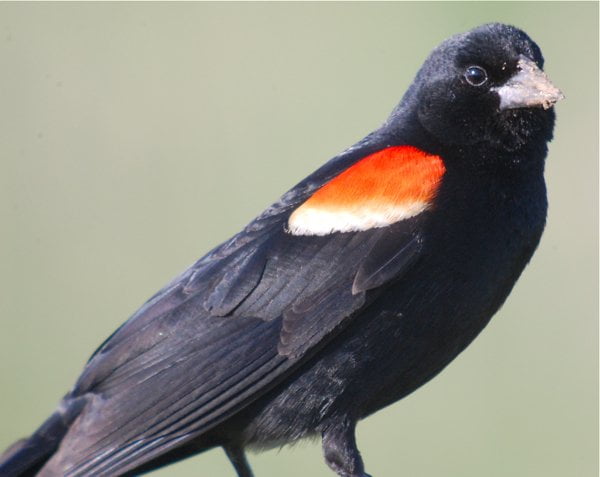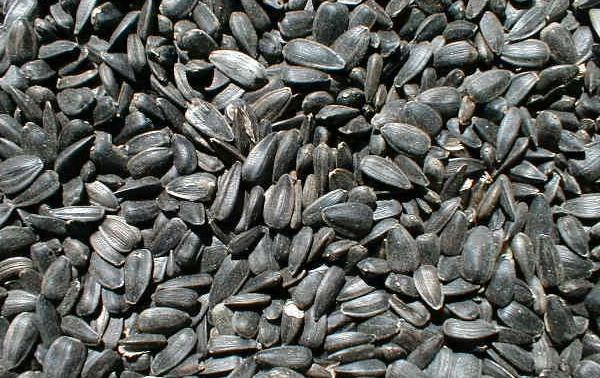Birds falling from the sky dead in mass quantities seem to be the hot button story of 2011. Each time I meet up with friends who are non birders or even somewhat aware of birds, they ask me, “What’s with all the dead birds?”
Every time I think the story has gone the way of all things hot to talk about and reference on the Internet another dead bird story pops up. Last week it was the story that 200 some odd European Starlings turned up dead in Yankton, South Dakota. I was surprised that a non native species that usually draws the ire of bird feeding enthusiasts, Purple Martin landlords and bluebird trail monitors was garnering attention. Others were far more shocked to learn that the birds were poisoned by the United States Department of Agriculture. Believe it or not, many birds are poisoned every year by the USDA. In 2009, the USDA poisoned over 4 million red-winged blackbirds, starlings, cowbirds and grackles (wonder if there were any Rusty Blackbirds in those flocks).
Generally, birds like starlings or the above Red-winged Blackbird show up in huge flocks in agricultural areas, farmers have several options in dealing with them. Some non-lethal and others undoubtedly lethal. It can be understandable when it’s to keep the flocks of hundreds or thousands of from defecating in cattle feed or from destroying a whole field of crops. Where this can get very weird is when blackbirds are killed to keep them from eating sunflower seed. There was a USDA plan some bloggers like Mike McDowell were angry about that entailed poisoning 6 million blackbirds over the course of 3 years because the blackbirds were “raiding” (or translation, native birds feeding on an available food source): sunflower feeds.
Black oil sunflower is the key ingredient in a “good all purpose” bird feeding mix. There’s big money in sunflower, not only for bird feeders, but also for cooking oils. A big increase in the price of this popular feeder seed that came about in the early 2000s when Frito Lay switched to using sunflower oil for all of their chips, taking a larger share of the sunflower on the market, leaving less available for use in bird feeding mixes. But is bird feeding worth it when blackbirds are killed so they won’t eat it on their migratory routes?
You can read more about the USDA plans for blackbird and starling relief on their website. Not all “Blackbird Management Strategies” involve poison, some of it involves non lethal methods like air cannons, scaring the flocks of blackbirds with low flying planes and removal of cattail wetlands.















why are the birds punished for poor farming practices… cows should be eating grass, not grain. if live stock was fed proper i wonder what the populations would be like. But now we have Monsanto the devil at hand… that means more cows more grain and more dead birds and the animals that eat those poisoned birds, etc……things are truly out of balance on this planet.
You bring about a truly valid point, nita. I cannot wait until the day when people begin using common sense, and science to solve the whole picture of the problem, instead of just pecking away at small torn shreds, and end up compounding the situation. Some ways very noticeable, others not so noticeable. I’ll keep my ramblings short, it just enrages me how people in our, “developed”, “sophisticated”, “complicated”, “modern”, society (sometimes I wonder about that one, as well), anyway how people just seem so ignorant to what’s really, factually, undeniably, (unless you’re in denial), going on. AAaahhh—throwing hands up in exasperation!
Greetings. An “environmental memory” is critical to understand present events. Your blog entry is merely “current events” as far as the USDA APHIS, formerly “Wildlife Services”, and avian “control”. For an excellent account of our nation’s on-going war against wildlife (including interesting insights into Aldo Leopold’s early life)try “Predatory Bureaucracy” by Michael Robinson, http://www.predatorybureaucracy.com/book/
As to blackbird control, consider 1975 when one of the primary animal damage issues of the day was winter “blackbird” roosts, starlings, cowbirds, red-wings and yes, Rusties and related species. PA-14, known as Tergitol, had been developed as an “avian stressing agent”. It killed by reducing the ability of birds to thermoregulate when applied under the right weather conditions.
The US Army decided to use PA-14 against roosts near bases in TN and KY and quickly prepared and issued an environmental impact statement seven days prior to spraying the roosts. An injunction sought to stop the Army was denied and promptly affirmed with reservations expressed by the DC Circuit about future use of PA-14. Society of Animal Rights v. Schlesinger, 512 F.2d 915 (D.C. Cir. (1975). In 1976 in order to avoid the probability that litigation would block Army action, Congress in a single day and without committee hearings passed a law exempting all blackbird control activities undertaken before April 15, 1976 by the federal government or the states of KY and TN from the National Environmental Ploicy Act, the Pesticide Control Act “or any other provision of law.” Later in 1976 the Department of Interior published a plan to kill up to 50 million blackbirds annually.
In Canada the Rusty Blackbird is now a bird of special concern. This year the USFWS finally got around to removing the Rusty from the federal depredation order which went into effect in 1976! The Canadians had this to say when designation the Rusty as a bird of special concern under SARA, their endangered species act: “…The species has experienced a severe decline that appears to be ongoing, albeit at a slower rate. There is no evidence to suggest that this trend will be reversed. Known threats occur primarily on the winter range, and include habitat conversion and blackbird control programs in the United States.” Of course, there are other causes as well: climate change, mercury etc.
Finally, concerning USDA-APHIS and their “non-lethal” methods–please do not endorse or in any manner accept cat-tail marsh destruction as an acceptable alternative. It does not pass the giggle test!
I was sprayed at Ft Campbell ky. at least three times. I have developed skin rashes that come and go. The surfactant that was used was tergitol s 9 or so they say. I have also developed ocular degenerative disease. With hundreds of black floaters in my eyes.I also have severe lung disease My joints hurt continually. I’ve talked to a lots of my fellow soldiers that were there with me. They seem to have the same problems that I have. Oh by the way I didn’t mention my heart deseasey.
I believe that the chemicals and toxins have a lot to do with my illnesses